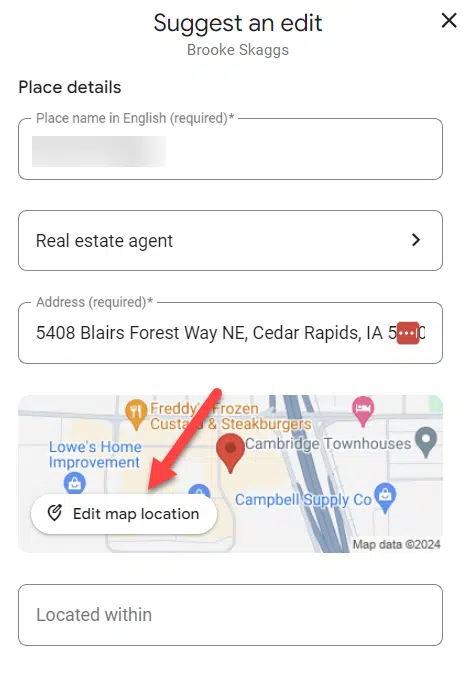Search engine optimization (SEO) is a critical component of any professional services firm’s digital marketing strategy. By improving the quality and quantity of traffic that arrives at your website through organic search engine result pages, you can increase visibility and attract new clients. As a professional services provider, it’s essential to have a comprehensive understanding of SEO and how it can help your firm achieve its overall goals.
Utilizing the tools available to track the performance of your website, including metrics such as referrals, links, and rankings, can help you make informed decisions about your SEO efforts and measure the success of your SEO campaigns.
When you want to measure your SEO effectiveness, you should consider these universal metrics:
1. Keyword Ranking
A variety of tools, like Serps and Google Search Console (easy and free to use), enable you to conduct keyword research and track your site’s rankings over time. There are other tools such as Ahrefs and Semrush which are paid. Why track them keyword ranking?
You can chart your SEO effectiveness; a better ranking factor for one keyword tends to mean better overall rankings, especially for long-tail keywords.
Note: When your domain ratings or organic traffic metrics improve but not the target keyword rankings—you may have a problem with your keyword research and target keyword selection. Aim for long-tail keywords and/or less competitive target keywords.
2. Search Engine Referrals
Google and the Yahoo!-Bing partnership has comprised 97%+ of search traffic in the U.S. for years. When you compare traffic from each search engine, you can:
- Compare each search engine’s volume contributions with its market share.
- Quickly identify and troubleshoot significant decreases in traffic from search engine results pages (SERPS).
- Sleuth out strategic value by identifying the tactics that work successfully for one (or more) search engines and applying those tactics to other engines.
3. Organic Traffic
As a professional services provider, it’s essential to have a solid understanding of the value and importance of organic traffic driven to your site through search engine results pages (SERPs). Utilizing effective SEO efforts can provide a significant return on investment as it costs nothing. However, it’s important to note that rankings alone don’t necessarily translate to SEO success, and the true metric of SEO performance is the amount of organic traffic driven to your site.
By collecting and evaluating data over various periods such as weekly, monthly, and annually, you can track the short-term and long-term results of your SEO efforts and then make data-driven decisions to optimize your strategies.
- Weekly Data: This data shows the short-term changes in traffic.
- Monthly Data: This data identify longer-term results and successes of SEO campaigns.
- Annual Data: This data provides an apples-to-apples comparison that allows you to see trends over time and from year to year—which is important if your services vary from season to season.
This approach also allows you to see trends over time and compare performance from year to year, which is particularly useful if your services have seasonal variations.
4. Organic Bounce Rate
Bounce rate, which Google Analytics defines as “the percentage of single-page sessions” is a great way to measure user experience and engagement on your site. Bounce rate is the percentage of visitors to a website who leave the site after only viewing a single page. This metric is an important indicator of the engagement and effectiveness of a website’s content and user experience.
If you have a high bounce rate, it’s possible that many people are leaving your site’s landing page without clicking through or otherwise interacting with the page. This affects your click-through rate (CTR).
A high bounce rate can indicate that a website’s content is not relevant or engaging to visitors, or that the website’s design and navigation are confusing or difficult to use.
To improve your website’s bounce rate, it’s important to focus on providing relevant and high-quality content, as well as optimizing the website’s design and user experience. This can include things like optimizing page load times, simplifying navigation, and including calls to action that encourage visitors to explore more of the website.
Note: A landing page with a high bounce rate is always cause for concern, and should be analyzed further.
5. Pages Per Session
For this engagement metric, higher numbers are better, because visitors are going to multiple pages within your site. A low page-per-session count may indicate that your page’s navigation needs work or that the content doesn’t provide enough of a hook to keep people on your site.
6. Organic Conversion Rate
Organic traffic’s great—but once people find your site, you haven’t turned a website visitor into a potential…yet. That’s why it’s good to track that aggregate conversion rate as it’s relevant to the services you provide.
7. Click-Through Rate (CTR)
A better CTR tends to improve keyword rankings. When Google sees that more people are clicking through your website, over time it will rank your site higher.
How does CTR work? If you have 100 impressions and 10 clicks, you’ll have a CTR of 10%.
8. Pages Indexed & Crawled Per Day
When Google discovers a site, its bots crawl it frequently. The more frequently Google crawls your site, the better—when you make changes or publish new blog posts, it’s noticed fairly quickly and often indexed in minutes.
Want Google to like your site? Boasting good user metrics for bounce rate, time on page, etc. starts with a good page speed.
A good page speed is necessary for a crawlable website. This article outlines the importance of maintaining a fast website with a good user experience that helps keep potential clients stay on your website. The Google PageSpeed Insights Tool is one good place to test your website’s speed and fine recommendations on how to make improvements.
Knowing and tracking your site’s index status also helps know how many of your site’s pages are indexed and which errors are causing pages to be de-indexed.
9. Crawl Errors
Broken links, 404 errors, and missing pages make it very difficult for Google to crawl your site. If it can’t find your pages, it can’t rank them. No need to check it daily, or weekly, but make a note to check the index’s status monthly and fix any crawl errors you find. Google Search Console makes it easier to track errors sitewide (by default) or by segment (with a filter).
A recently published article detailed the most important SEO success metrics to track for 2023. In addition to the items listed above, you may want to also track:
- Mobile usability
- Lifetime value for users
- Quality inbound link count




